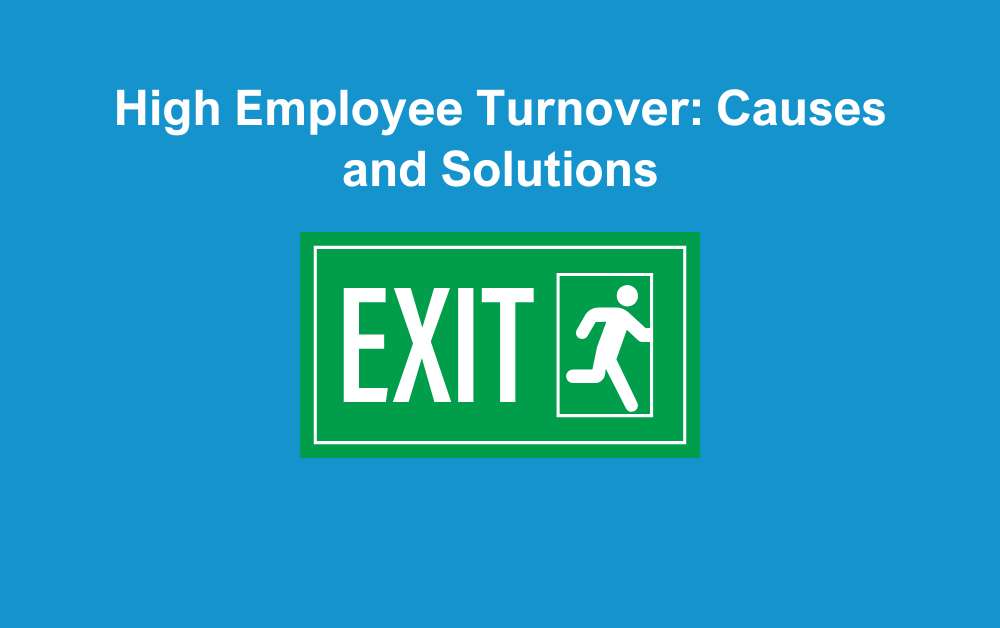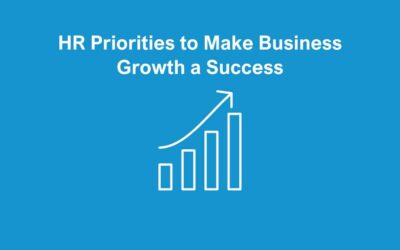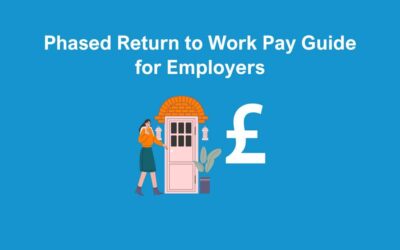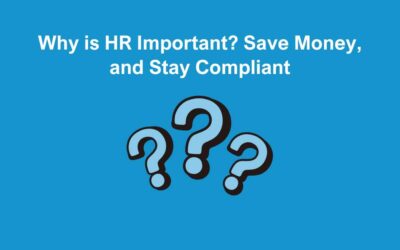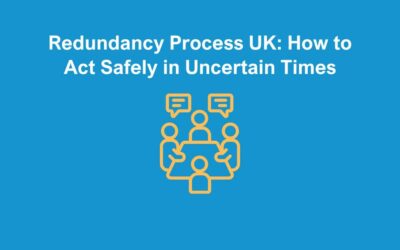Employees move on from every business at some stage, and it’s not always for negative reasons. Whether someone is retiring, starting a family, or pursuing new opportunities, employee turnover is a natural part of working life. However, when you start to see a higher number of employees leaving on a regular basis, it can become a concern. Frequent departures can affect morale, reduce productivity, and make it harder for your business to move forward.
In this article, we’ll explore the main causes of high staff turnover, how to measure it effectively, and practical steps you can take to reduce it.
What is a high employee turnover rate?
According to a survey by CIPD, the average turnover rate for UK employees is around 34%. The Hospitality sector has the highest rate with 52.2% compared to public admin and defence which is at 24.5%. If you are noticing more staff are leaving compared to your industry average, this is a clear indication that you are losing more staff than you should be.
If your employee turnover rate is at the higher side, skills can become scarce and recruitment can be costly. The aim is not to have 0% people leaving the business. You want to welcome more people to your team and bring new ideas to grow. It’s all about getting the balance right.
How to measure staff turnover rate
The easiest way to measure employee turnover is to calculate it as a percentage of your total workforce over a set period. For example, monthly or annually. To do this, divide the number of employees who have left by the average number of employees during that period, then multiply by 100.
For instance, if you employed 80 people over the year and 40 left, the calculation would be:
(40 ÷ 80) × 100 = 50% turnover rate.
Top Causes of staff leaving
As we mentioned before, there are many reasons why staff choose to leave, and it doesn’t have to be a negative reason. It just might now have been the right fit for either party. However, if you are noticing an alarming increase in exits, it’s time to look at why. Here’s some common reasons:
Workload
With rising costs, many businesses are feeling the financial pressure. In response, some have had to make difficult decisions, including redundancies, to manage expenses. As a result, remaining employees are often required to take on extra responsibilities to cover the gaps left behind. This added workload can quickly become overwhelming, creating a stressful and high-pressure working environment.
Solution: Make sure you regularly catch-up with your team and monitor workload. Make sure full holiday entitlement is taken, introduce flexible working, and consider bringing in more staff to stop burnout.
Company Culture
Most employees value a positive working environment more than anything. If your company culture is negative and your employees feel under-valued, you should expect to see a higher employee turnover rate.
Solution: Send out anonymous feedback forms to find out how your employees are feeling. This is also a great way to identify any issues and resolve them before it’s too late.
Lack of Personal Development
If staff see no progression in their position, they will likely look for other opportunities.
Solution: Provide your staff with regular training and development opportunities. Look at ways their role can progress so they feel more positive about their future within the company.
Lack of Company Benefits and Recognition
A lack of meaningful benefits and recognition can leave employees feeling undervalued and disengaged, increasing the likelihood that they’ll look elsewhere for an employer who appreciates and rewards their efforts.
Solution: To address this, businesses should review their benefits package and introduce regular recognition initiatives that celebrate employee achievements, helping to boost morale, engagement, and long-term retention. It’s important to remember that sometimes a simple thank you can go a long way!
Clash in Personalities
Clashes in personality between staff and managers can lead to tension, poor communication, and low morale, which may ultimately drive employees to leave the business and increase employee turnover.
Solution: provide your leadership team with management training. Help them to understand the importance of engaging staff and communicating in a way that is received well by all team members.
The Cost of a High Volume of Staff Leaving
When employees leave frequently, the true cost to your business goes far beyond recruitment fees. The financial impact includes advertising vacancies, agency fees, interview time, onboarding, and training new starters. However, there are also hidden costs to consider. Knowledge, experience, and relationships are lost every time an employee walks out the door, which can affect continuity and overall team performance.
In addition, high employee turnover can damage your employer reputation. If potential candidates see a pattern of people leaving quickly, they may question the stability or culture of your organisation, making it harder to attract top talent in the future.
The impact on existing employees should not be underestimated either. When team members see colleagues leaving regularly, it can lower morale and increase anxiety about their own future with the company. This can create a cycle of disengagement that leads to even more resignations.
Reducing Staff Turnover with The HR Booth
If you’ve noticed an increase in staff leaving, it’s important to take proactive steps to understand why and put strategies in place to turn things around. At The HR Booth, we work with businesses across the UK to help reduce employee turnover and improve retention through tailored HR support.
Here are some practical ways we can help:
1. Conducting Exit Interviews and Employee Surveys
We can help you identify the real reasons why staff are leaving by developing structured exit interviews and anonymous employee surveys. Understanding these patterns allows you to take meaningful action before further resignations occur.
2. Improving Leadership and Management Skills
Effective leadership plays a huge part in employee satisfaction. We provide management training to equip your leaders with the skills to motivate, engage, and retain their teams.
3. Enhancing Company Culture
We can support you in building a positive workplace culture through improved communication, recognition, and engagement initiatives. A strong culture helps people feel connected and valued, which naturally reduces turnover.
4. Supporting Recruitment and Onboarding
Attracting the right people from the start is essential. We can help you refine your recruitment process and ensure new employees have a smooth onboarding experience, setting them up for long-term success.
High employee turnover isn’t something you have to accept as part of doing business. With the right approach, you can create a workplace where people feel motivated, supported, and proud to stay.
If you’d like advice on how to improve employee retention or want to discuss how we can support your business, get in touch with our team today. We’re here to help you build a happy, loyal, and productive workforce.

